Leafy Spurge
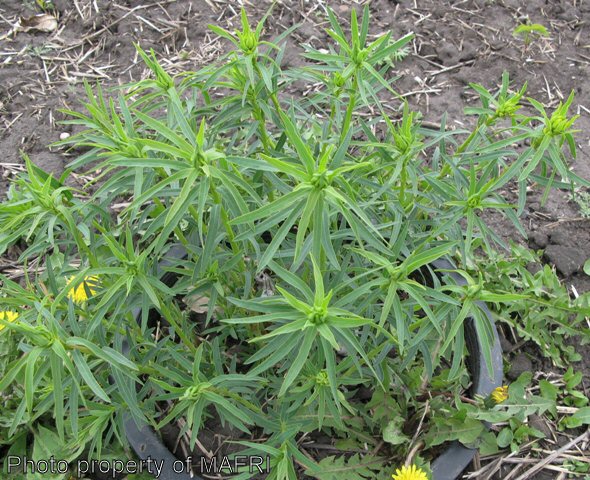 click to enlarge |
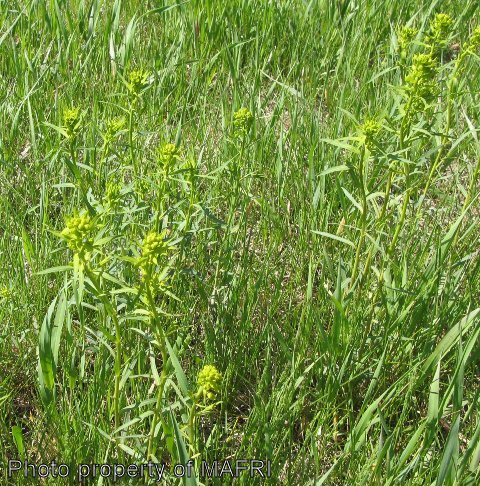 |
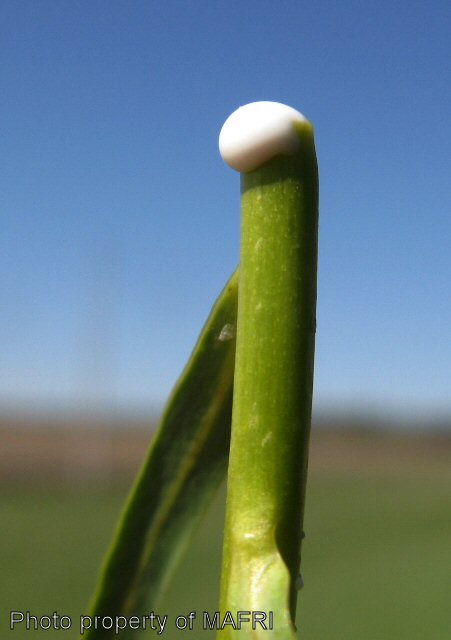 |
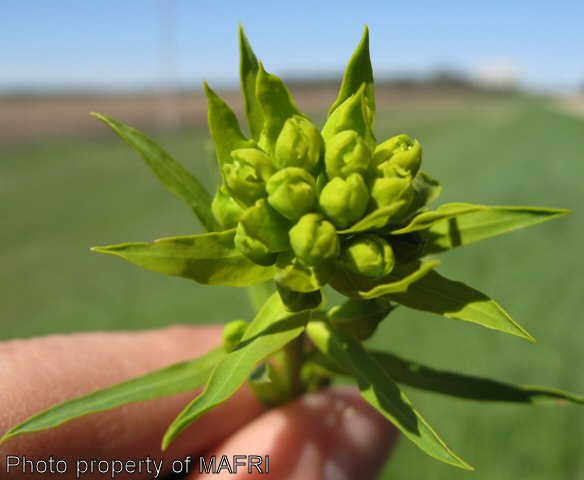 |
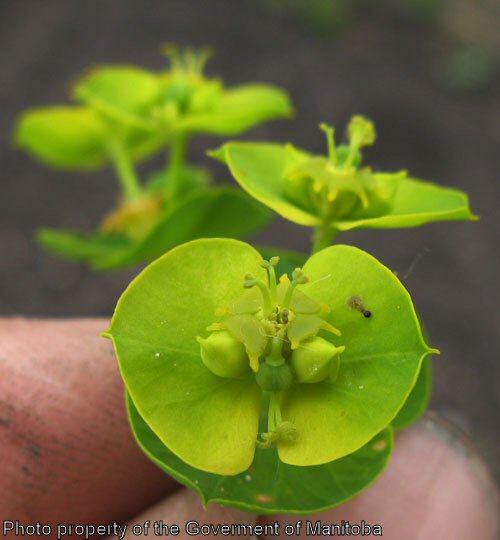 |
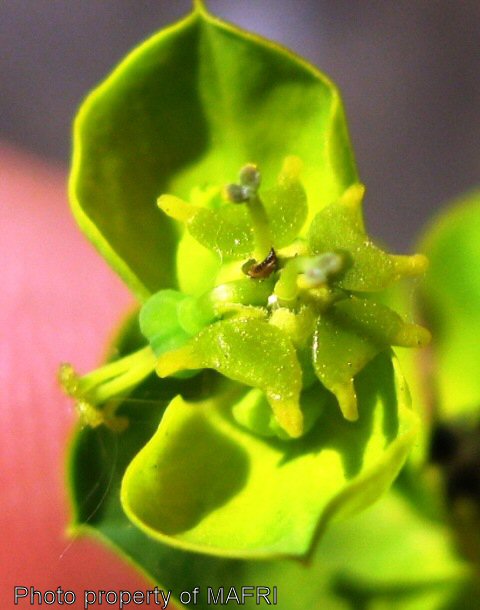 |
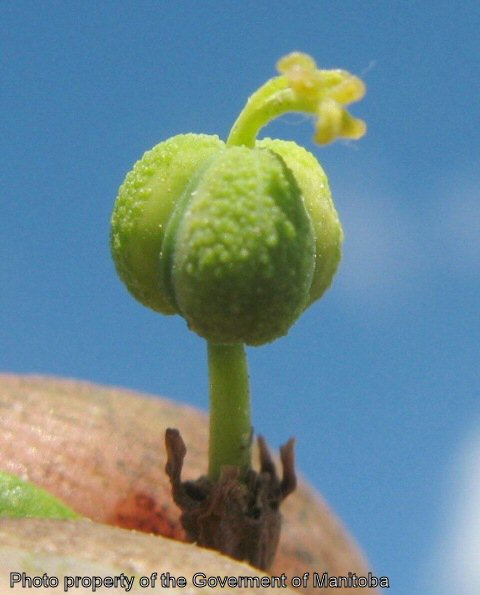 |
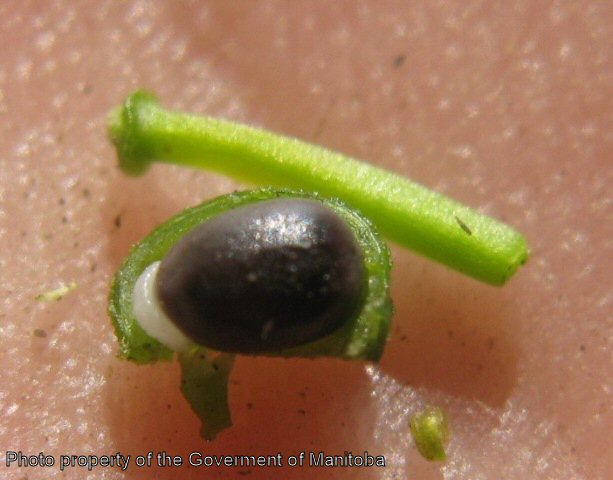 |
Biology
A perennial weed, reproducing by seeds and creeping rootstocks. The stems are erect, to 1 m tall, glabrous, and contain latex. The leaves are alternate, sessile, spirally arranged, light green, linear to linear-lanceolate, and contain latex. A whorl of leaves marks the start of the flowering portion of the stem. The flowers are unisexual, small, greenish, lack petals and sepals, and occur at the tips of stems in umbel-like clusters. Both male and female flowers exist on the same plant. The seeds are about 2.5 mm long, smooth, greyish-yellow or brownish, 3 per capsule, with a yellow lump near the base.
This weed is found in rangelands and cultivated fields. Difficult to control because the root fragments can produce new shoots from depths as great as 1 meter. The milky latex within the stems and leaves is harmful to skin causing rashes and it is poisonous to most livestock. Livestock feeding on leafy spurge can become photosensitive.
Biological control of this weed using moths, larvae, and beetles is currently being researched.
Scouting Techniques
Take a minimum of 20 weed counts across the field.
Effects On Crop Quality
Growth and germination of desirable plant species is inhibited by the weeds root extracts.
Threshold/Yield Loss
Reduces the yield of economically important crops and the stocking capacity on rangelands.
Control Tips
- grazing (continuous) with goats or sheep
- Group 4 herbicide application
- Group 11 (Amitrol T)
- root boring larvae and flea beetles in non-crop areas
